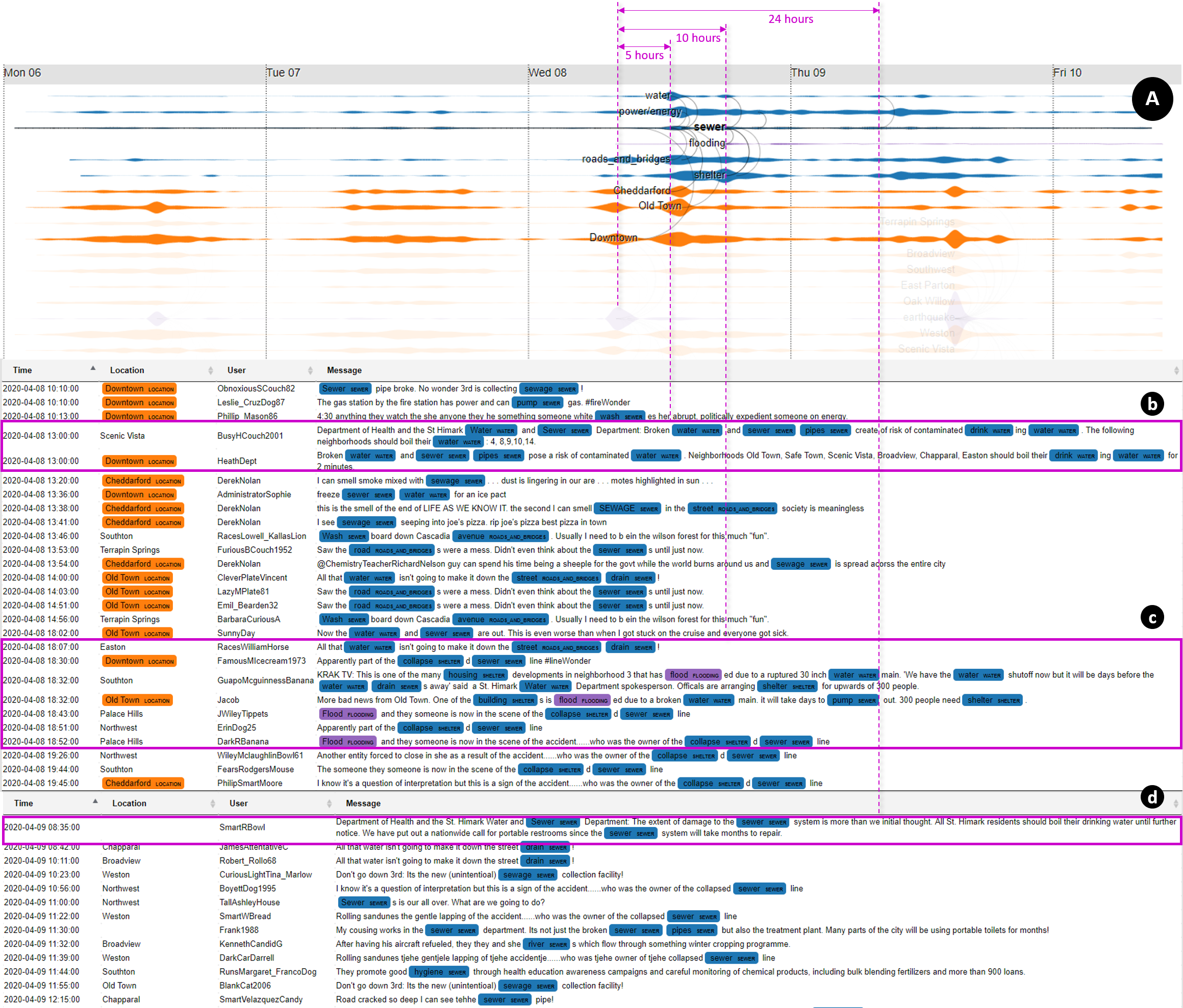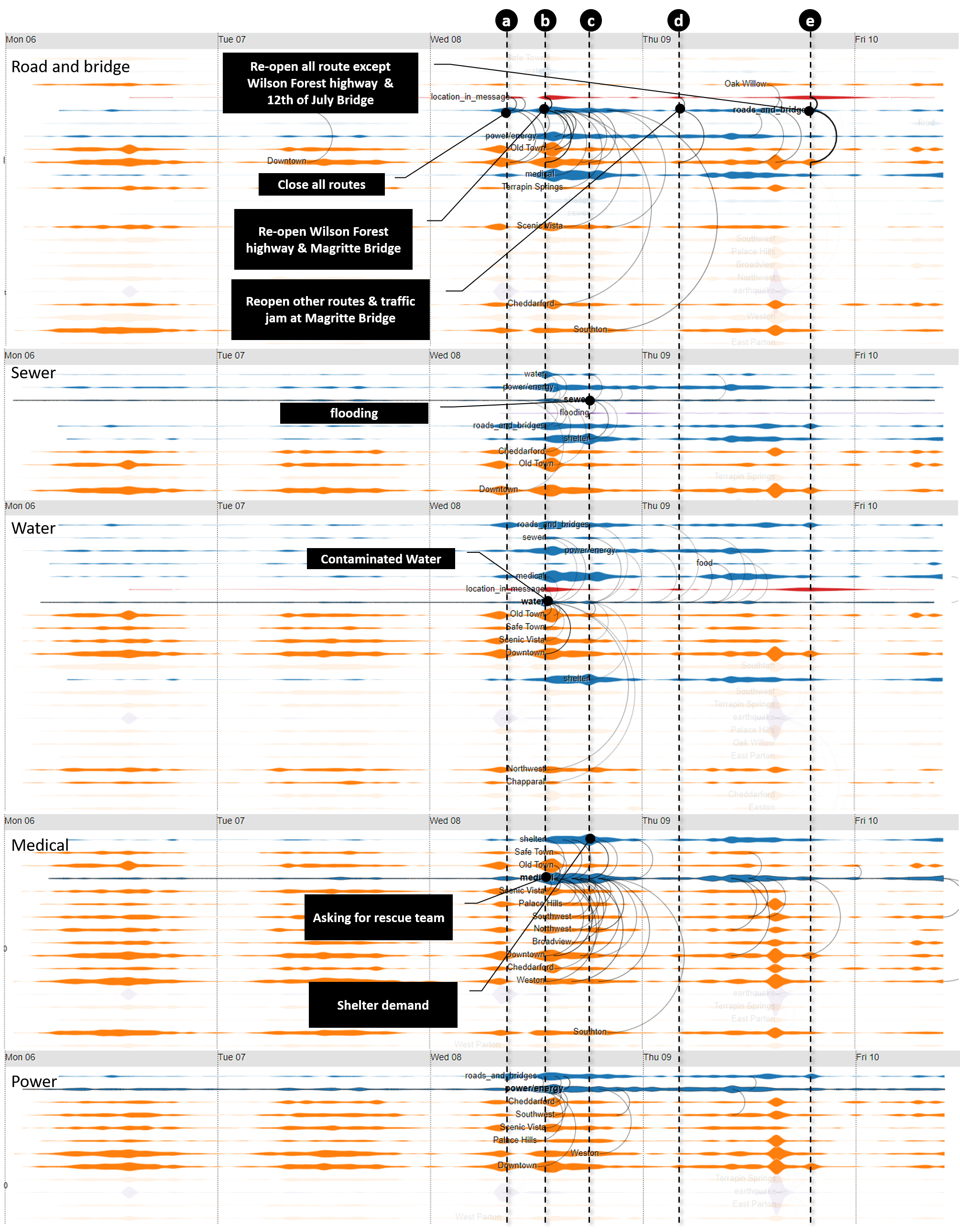Resources:
- Food: food, hungry, eat
- Water: water, drink, thirst, dehydrate, reservoir
- Sewer: sewage, discharge, drain, irrigation, sewer, reservoir
- Power/Energy: blackout, electric, candle, energy, flashlight, fuel, gas, generator, nuclear, power, radiant, radiation, radio rays, valve
- Medical: ambulance, blood, bruise, emergency, escape, evacuate, fatal, first aid, fracture, hurt, illness, infection, injury, kill, lump, medic, red cross, rescue, respiratory, suffering, swollen, urgent, victim, wound
- Shelter: shelter, housing, building, collapse, construction, house
- Roads_and_bridges: bridge, traffic, congestion, avalanche, highway, lane, logistic, jammed, route, street, transportation
Our visualization has three main components:
1. Control panel includes
- Search box: To filter the main view by the inputted term
- Color legend: Such as Green for users, Blue for resources. Users can click on these names to show/hide that category in the main view
- Link filter: To adjust the threshold for link thickness.
- The St. Himark map: To allow users to select regions of interest.
2. Main view: We use the dynamic network visualization, called
TimeArc, to visualize the evolution of different topics and the correlations between them. As shown in the main view of Figure 1, TimeArc has 2 main components: the stream graphs of topics depict the popularity of these topics over time, and the arcs between topics present the cooccurrences in the text messages from social media posts. The thickness of links indicates how often the two topics mentioned together in Y*INT messages.
3. Detail view:
The detailed Y*INT messages of particular events/topics are presented to users in tabular format on demand. This allows users to investigate the content of social media posts by selecting a topic or a link in our time series view (TimeArcs).
Questions
1- Using visual analytics, characterize conditions across the city, and recommend how resources should be allocated at 5 hours and 30 hours after the earthquake. Include evidence from the data to support these recommendations. Consider how to allocate resources such as road crews, sewer repair crews, power, and rescue teams. Limit your response to 1000 words and 12 images.

Figure 2. Our Earthquake visualization: (A)Frequency of earthquake-related terms and (B) Temporal network of the earthquake and the associated regions.
Figure 2(A) shows the 3 earthquakes (at 2pm Mon 06, 7am Wed 08, and 2pm Thu 09). In particular, the purple stream depicts the aggregated frequency of earthquake-related terms (listed in the above taxonomy): seismic, quake, shake, shaking, wobble, quiver, epicenter. On the left, St. Himark map is colored by the number of earthquake-related posts.
As shown in Figure 2(B), the 2nd pulse is strongly connected to Downtown and West Parton while the 3rd pulse has many more connections to Weston, Southton, Cheddarford, Southwest, East Parton, and Boardview. In Figure 2(B), the map is color-coded by only posts associated with these connections (arcs).










